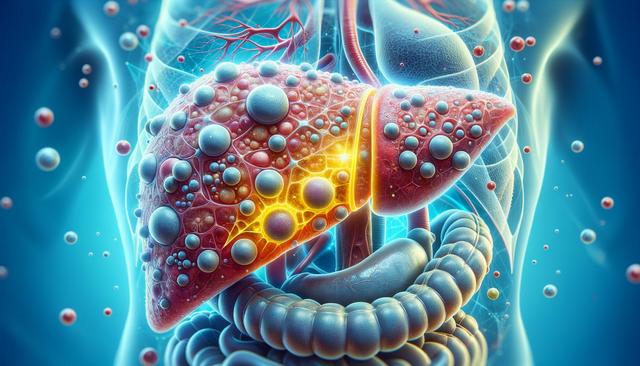What Is Fatty Liver?
Fatty liver, also known as hepatic steatosis, refers to the accumulation of fat in the liver cells. While it is normal for the liver to contain a small amount of fat, when more than 5% to 10% of the liver’s weight is fat, it is considered a fatty liver. This condition can be categorized into two main types: alcoholic fatty liver disease (AFLD) and non-alcoholic fatty liver disease (NAFLD). The latter is more prevalent and is not associated with heavy alcohol use. Fatty liver can progress through several stages, starting from simple steatosis to more severe forms like non-alcoholic steatohepatitis (NASH), fibrosis, and eventually cirrhosis if left unmanaged.
The early stages of fatty liver often present no symptoms, which means many individuals may be unaware they have the condition. It is frequently discovered during routine blood tests or imaging studies for other health concerns. Although not immediately life-threatening, fatty liver should not be ignored, as it can lead to serious liver damage over time.
Common Causes and Risk Factors
Several factors contribute to the development of fatty liver. The most common is obesity, especially when fat accumulates around the abdomen. Insulin resistance and type 2 diabetes are also strongly associated with this condition. Additional contributing factors include:
- High cholesterol or triglyceride levels
- Rapid weight loss or malnutrition
- Use of certain medications, such as corticosteroids
- Genetic predisposition
- Polycystic ovary syndrome (PCOS)
While lifestyle plays a significant role, genetic and metabolic factors can also increase susceptibility. People who lead sedentary lifestyles or consume high-calorie diets rich in saturated fats and sugars are at heightened risk. Understanding these risk factors is essential for prevention and early intervention.
Recognizing Symptoms and Getting a Diagnosis
Fatty liver often progresses silently, especially in its early stages. However, as the condition advances, some individuals may begin to notice symptoms such as:
- Fatigue and weakness
- Discomfort or a dull ache in the upper right abdomen
- Unexplained weight loss
- Swelling in the abdomen (ascites)
- Yellowing of the skin and eyes (jaundice) in severe cases
Diagnosis typically involves a combination of methods. Blood tests can identify elevated liver enzymes, which may indicate liver inflammation. Imaging techniques such as ultrasound, CT scans, or MRI can detect fat buildup in the liver. In some cases, a liver biopsy may be performed to determine the exact stage of the disease and assess the level of inflammation or fibrosis.
Lifestyle Changes and Management Strategies
There is currently no specific medication approved solely for treating fatty liver, making lifestyle adjustments the cornerstone of management. Losing weight through a balanced diet and regular exercise is one of the most effective ways to reduce liver fat. Even a modest weight loss of 5% to 10% can significantly improve liver health. Key lifestyle changes include:
- Adopting a diet rich in fruits, vegetables, whole grains, and lean proteins
- Limiting saturated fats, refined sugars, and processed foods
- Engaging in at least 150 minutes of moderate-intensity exercise per week
- Avoiding alcohol, especially if diagnosed with NAFLD
It’s also essential to manage any related conditions like diabetes, high cholesterol, or high blood pressure, as these can exacerbate liver damage. Regular monitoring by a healthcare provider is important to track progress and make necessary adjustments to the management plan.
Long-Term Outlook and Preventive Measures
With early detection and consistent lifestyle changes, many individuals with fatty liver can prevent further progression and even reverse the condition. However, when left untreated, fatty liver can lead to more serious complications, including liver fibrosis, cirrhosis, and liver cancer. For individuals at high risk, preventive strategies are vital. These include:
- Maintaining a healthy weight
- Staying physically active
- Following a balanced and nutrient-dense diet
- Managing chronic conditions effectively
- Regular health checkups and liver function monitoring
Public awareness about fatty liver is growing, and with that comes improved screening and support. Community health programs, educational resources, and professional guidance can all play a role in helping individuals make informed decisions about their liver health.




Leave a Reply